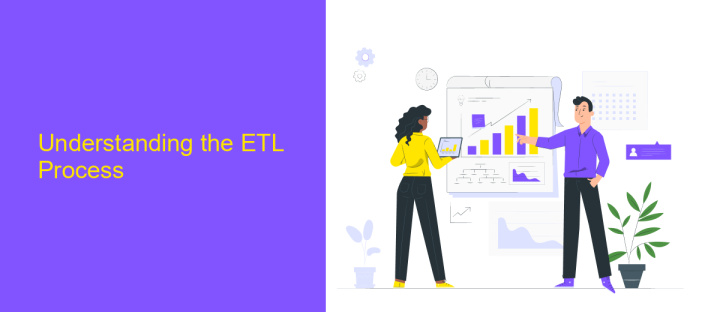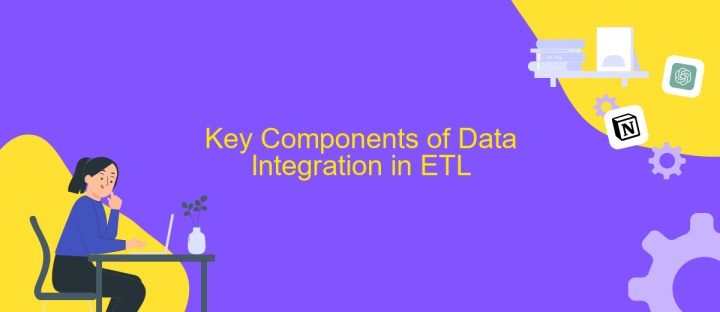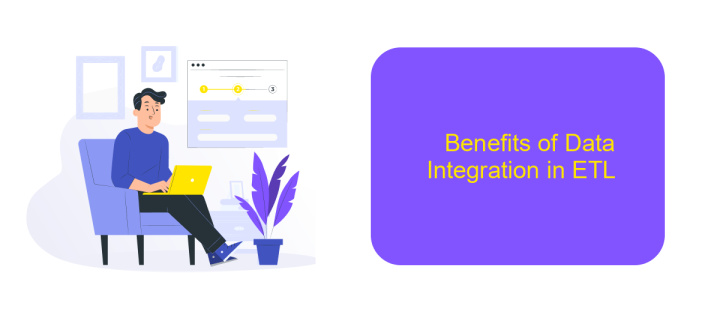What is Data Integration in ETL
Data integration in ETL (Extract, Transform, Load) is a crucial process in modern data management. It involves combining data from different sources into a unified view, enabling more comprehensive analysis and decision-making. This integration ensures that data is consistent, accurate, and accessible, making it invaluable for businesses looking to leverage their data assets effectively.
Introduction to Data Integration in ETL
Data integration in ETL (Extract, Transform, Load) is a crucial process that involves combining data from different sources into a unified view. This step is essential for organizations to ensure that their data is consistent, reliable, and ready for analysis. By integrating data, businesses can make more informed decisions and streamline their operations.
- Combining data from multiple sources
- Ensuring data consistency and reliability
- Preparing data for analysis and reporting
One of the key aspects of data integration is setting up seamless connections between various data sources. Tools like ApiX-Drive facilitate this process by automating the integration of different systems and applications. This not only saves time but also reduces the risk of errors, enabling businesses to focus on deriving insights from their data rather than managing it. Effective data integration is the backbone of any successful ETL process, empowering organizations to harness the full potential of their data.
Understanding the ETL Process

The ETL process, which stands for Extract, Transform, Load, is a crucial component in data integration. It begins with extracting data from various sources, such as databases, APIs, and flat files. This data often comes in different formats and structures, making it necessary to standardize and clean it. The transformation phase involves converting this raw data into a structured format that meets the specific requirements of the target system. This can include data cleaning, filtering, aggregation, and enrichment to ensure consistency and reliability.
Once the data is transformed, it is loaded into a target database or data warehouse, where it can be accessed for analysis and reporting. Efficient ETL processes are essential for maintaining data integrity and enabling seamless data integration. Tools like ApiX-Drive can simplify this process by automating the extraction, transformation, and loading of data from multiple sources. ApiX-Drive offers a user-friendly interface and robust features, making it easier to set up and manage data integrations without extensive technical knowledge.
Key Components of Data Integration in ETL

Data integration in ETL (Extract, Transform, Load) processes is essential for consolidating data from multiple sources into a unified view. This enables organizations to make more informed decisions and streamline their operations.
- Data Extraction: The initial phase involves retrieving data from various sources, such as databases, APIs, and flat files. Tools like ApiX-Drive can simplify this process by connecting to multiple data sources seamlessly.
- Data Transformation: After extraction, the data needs to be cleaned, normalized, and formatted to meet the target system's requirements. This step ensures data consistency and quality.
- Data Loading: The final step is loading the transformed data into the target system, such as a data warehouse or a data lake, for further analysis and reporting.
Effective data integration in ETL processes not only improves data accuracy but also enhances operational efficiency. Utilizing tools like ApiX-Drive for automated data extraction and integration can significantly reduce the time and effort required, allowing organizations to focus on deriving actionable insights from their data.
Benefits of Data Integration in ETL

Data integration in ETL processes offers numerous advantages that can significantly enhance the efficiency and effectiveness of data management within an organization. By seamlessly combining data from various sources, businesses can achieve a more comprehensive and accurate view of their operations, leading to better decision-making.
One of the primary benefits of data integration is the elimination of data silos, which are isolated data sets that can hinder collaboration and data accessibility. Integrating data from different systems ensures that all relevant information is available in a unified format, facilitating easier analysis and reporting.
- Improved data quality and consistency
- Enhanced decision-making capabilities
- Streamlined business processes
- Reduced data redundancy and storage costs
- Increased operational efficiency
Furthermore, utilizing tools like ApiX-Drive can simplify the integration process by automating data transfers between various platforms and applications. This not only saves time but also reduces the risk of errors associated with manual data handling. Overall, data integration in ETL processes is a critical component for any organization aiming to leverage data for strategic advantage.
- Automate the work of an online store or landing
- Empower through integration
- Don't spend money on programmers and integrators
- Save time by automating routine tasks
Conclusion
Data integration in ETL is a critical process that enables organizations to consolidate data from various sources into a unified view, facilitating better decision-making and operational efficiency. By combining data from disparate systems, businesses can gain comprehensive insights, streamline workflows, and enhance data quality. The integration process ensures that data is accurate, consistent, and readily available for analysis, which is essential for driving strategic initiatives and achieving business goals.
Leveraging tools like ApiX-Drive can significantly simplify the data integration process. ApiX-Drive offers a seamless way to connect multiple applications and automate data transfers without the need for extensive coding or technical expertise. This not only reduces the time and effort required for integration but also minimizes errors and ensures data consistency. By utilizing such services, organizations can focus on leveraging their integrated data to drive innovation and maintain a competitive edge in the market.
FAQ
What is Data Integration in ETL?
Why is Data Integration important in ETL?
What are the common challenges in Data Integration?
How can automation tools help in Data Integration?
What should be considered when choosing a Data Integration tool?
Time is the most valuable resource for business today. Almost half of it is wasted on routine tasks. Your employees are constantly forced to perform monotonous tasks that are difficult to classify as important and specialized. You can leave everything as it is by hiring additional employees, or you can automate most of the business processes using the ApiX-Drive online connector to get rid of unnecessary time and money expenses once and for all. The choice is yours!


